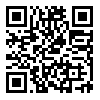Volume 43, Issue 2 (2025)
jmciri 2025, 43(2): 6-15 |
Back to browse issues page
Download citation:
BibTeX | RIS | EndNote | Medlars | ProCite | Reference Manager | RefWorks
Send citation to:



BibTeX | RIS | EndNote | Medlars | ProCite | Reference Manager | RefWorks
Send citation to:
Malek M, Parviz S. The Role of Imaging Methods in Differentiating Uterine Leiomyosarcoma from Leiomyoma: A Review Article. jmciri 2025; 43 (2) :6-15
URL: http://jmciri.ir/article-1-3318-en.html
URL: http://jmciri.ir/article-1-3318-en.html
Department of Radiology, Medical Imaging Center, Advanced Diagnostic and Interventional Radiology Research Center (ADIR), Tehran University of Medical Sciences, Imam Khomeini Hospital, Tehran, Iran
Abstract: (1310 Views)
Abstract Background: Uterine leiomyomas are the most common benign tumors in women, while leiomyosarcomas are rare tumors, accounting for only 3 to 7% of all uterine malignancies. Due to the significant overlap in clinical presentation and imaging features between these two tumors, distinguishing them can be challenging. This study aims to review the role of various imaging modalities in differentiating these two entities and to propose strategies for improving diagnostic accuracy. Methods: This review was conducted through a systematic search of reputable databases, including PubMed and Google Scholar. Relevant articles discussing imaging characteristics of uterine leiomyomas and leiomyosarcomas, particularly focusing on ultrasound, MRI, and PET-CT, were identified and analyzed. Inclusion criteria encompassed studies that specifically described the imaging features of these two lesions and reported diagnostic accuracy. Results: Ultrasound, as the first-line imaging modality, has limitations in differentiating between leiomyomas and leiomyosarcomas. Leiomyomas typically present as well-defined, hypoechoic masses with posterior acoustic shadowing, whereas leiomyosarcomas appear as heterogeneous masses with irregular margins and central necrosis. MRI offers superior tissue characterization, with leiomyomas generally showing low, uniform T2 signal intensity, while leiomyosarcomas demonstrate heterogeneous T2 signal with areas of necrosis and hemorrhage. Diffusion-weighted imaging (DWI) and apparent diffusion coefficient (ADC) mapping were identified as effective tools, with ADC values below 0/905 × 10⁻³ mm²/s being suggestive of leiomyosarcoma. PET-CT demonstrated higher FDG uptake in leiomyosarcomas compared to leiomyomas. Conclusion: Advanced imaging techniques, such as DWI, ADC, and PET-CT, along with a careful assessment of morphological features, can significantly improve the differentiation between uterine leiomyomas and leiomyosarcomas. However, final confirmation of diagnosis requires histopathological evaluation.
Type of Study: Review |
Send email to the article author
| Rights and permissions | |
 |
This work is licensed under a Creative Commons Attribution-NonCommercial 4.0 International License. |






